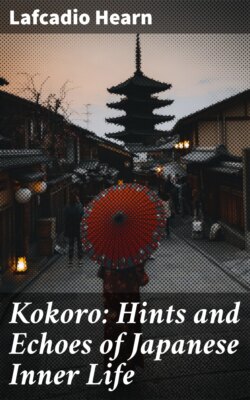Читать книгу Kokoro: Hints and Echoes of Japanese Inner Life - Lafcadio Hearn - Страница 16
На сайте Литреса книга снята с продажи.
III
ОглавлениеKyoto, April 16.
Of all peculiarly beautiful things in Japan, the most beautiful are the approaches to high places of worship or of rest—the Ways that go to Nowhere and the Steps that lead to Nothing.
Certainly, their special charm is the charm of the adventitious—the effect of man's handiwork in union with Nature's finest moods of light and form and color—a charm which vanishes on rainy days; but it is none the less wonderful because fitful.
Perhaps the ascent begins with a sloping paved avenue, half a mile long, lined with giant trees. Stone monsters guard the way at regular intervals. Then you come to some great flight of steps ascending through green gloom to a terrace umbraged by older and vaster trees; and other steps from thence lead to other terraces, all in shadow. And you climb and climb and climb, till at last, beyond a gray torii, the goal appears: a small, void, colorless wooden shrine—a Shinto miya. The shock of emptiness thus received, in the high silence and the shadows, after all the sublimity of the long approach, is very ghostliness itself.
Of similar Buddhist experiences whole multitudes wait for those who care to seek them. I might suggest, for example, a visit to the grounds of Higashi Otani, which are in the city of Kyoto. A grand avenue leads to the court of a temple, and from the court a flight of steps fully fifty feet wide—massy, mossed, and magnificently balustraded—leads to a walled terrace. The scene makes one think of the approach to some Italian pleasure-garden of Decameron days. But, reaching the terrace, you find only a gate, opening—into a cemetery! Did the Buddhist landscape-gardener wish to tell us that all pomp and power and beauty lead only to such silence at last?
